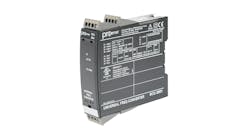When chemical processors — including those creating plastic, polymer or rubber products — utilize batch reactors, following the recipe from batch-to-batch and plant-to-plant is critical to reliably and cost-effectively manufacture high value-added materials to spec. This typically involves charging the reactor, manipulating operating conditions to meet processing criteria and shutting down and emptying the reactor.
While certain procedures and processes are increasingly standardized and automated, numerous key steps in and around the automation are still dependent on operator input or manual intervention. Unfortunately, when the operator is interrupted to handle other tasks, or when responses vary from operator to operator, off-spec product can result. This can require costly corrective steps or product disposal.
As a solution, some leading chemical processors are seamlessly automating procedures while providing operators with greater control and visibility. This helps chemical processors achieve more consistently reliable batch processing to spec, which enhances quality, productivity and profit.
As an example, Kraton Corporation develops, manufactures and markets bio-based chemicals and specialty polymers worldwide, and has more than 800 customers across a diverse range of end markets in over 70 countries. The company is also a leading global producer of styrenic block copolymers (SBC) and pine chemicals. In January 2016, Kraton completed the acquisition of Arizona Chemical, a leading global producer of high-value performance products and specialty chemicals derived from non-hydrocarbon, renewable raw materials. Arizona Chemical uses renewable biomass derivatives (referred to as “soap”) from paper production to produce rosins used in inks, adhesives, road paint, construction, packaging, personal care and other applications for its clients. Its process displaces petroleum dependence for equivalent products, but in so doing must account for the inherent variability in biomass feedstocks to its process.
Kraton operates a network of nine strategically located manufacturing facilities in North America and Europe. However, at its Savannah, Georgia, facility, too many batches were produced out of spec and required correction, and the issue could not be pinpointed to a certain product or work shift. The previous automation system consisted of a series of programs that still required operator intervention at key junctures. For example, an automated procedure could charge a reactor with a particular product but might still require the operator’s manual attention to start and stop heating.
After a thorough review, it was determined that product quality could be significantly improved by optimizing the execution of manual tasks.
Operators would get interrupted or become busy with other tasks and, for example, be unable to hold a material at a certain steady melt point because they had to unstick a valve by running steam into a line to free it up.
Natural human variability in operator response was also causing inconsistencies, for instance, in the starting and stopping of heaters and other time-sensitive procedural steps.
While the resulting off-spec product could be corrected, making the necessary adjustments took extra time, labor, material and line capacity, which reduced productivity and profitability.
Kraton utilizes three different DCS platforms to filter, centrifuge and distill the feedstocks into resin precursors. To control its reactor processes, Kraton uses the D/3 Distributed Control System (DCS), from Owings Mills, Maryland-based NovaTech LLC Process Division, due to its expertise in batch process automation, for the flexibility of the Sequence and Batch Language (SABL) that the D/3 controllers use, and for an S88-based layered batch management package called FlexBatch.
The NovaTech D/3 operator interface displays real-time process information and makes it easy for the operator to control the process, enter information and interact with sequence programs. In addition to the real time process graphics and the FlexBatch interface, operators had access to Standard Operating Procedures, in standard document .doc and .pdf formats, which were embedded within graphics or in help menus. For manual tasks, operators would type answers to enter values, such as which vessel was used to supply the materials to produce a given product.
“I have not seen any DCS that can handle nearly as many loops and as much programming per controller as the D/3,” said Gregg Cox, the senior controls engineer who designed the operator interface. “We run about 3,000 I/O points on five Process Control Modules here, and we could probably do it on two.”
Kraton later added a layered procedural automation software package, Paperless Procedures (PLP), also from NovaTech, to the D/3. The software solution allowed manual tasks and automated tasks to be seamlessly integrated into the same SABL batch programs, an innovation which NovaTech patented.
PLP provides operators with an intuitive SOP-like checklist interface that merges manual and automated tasks in real time, that adapts dynamically to real-time process data and which can be viewed from any PC, tablet, smartphone or other device. PLP also provides secure, time-stamped records of every procedure step to support compliance requirements and continuous improvement efforts. The combination of tools has allowed Kraton to achieve more accurate, consistent and repeatable batches.
“The final product is completed with scheduled campaigns on FlexBatch that are completed with batches run with PLP,” said Cox. “This hybrid approach has improved product quality while reducing batch cycle times.”
With this approach, the operator can modify recipe parameters, recipe procedures, production schedule, batch start rules and equipment utilization, or scale batch amount at any point during recipe development and execution. Recipe values are automatically entered into the system, and all the operator needs to do is click on the reactor to use and which vessel to pull from. This is safer, more intuitive and speeds the process because the operator selects all the equipment to be used before starting the procedure.
“We are basically eliminating some of burden on operators to interpret the process,” said Cox. “This has resulted in batch cycles that are more consistently executed with the proper timing and procedure. As a result, we can begin looking at the overall design of our processes and engineer out some of the “wiggle room” that had to be there to account for operators’ varying interpretations of what to do next and when.”
According to Cox, filling in the gaps in the system’s automation process ultimately provides higher yields, reduced errors, improved safety and improved profitability. This has enabled Kraton to capitalize and expand its operations over both petroleum-based and other biosourced competitors.
Del Williams is a technical writer based in Torrance, California.
NovaTech


